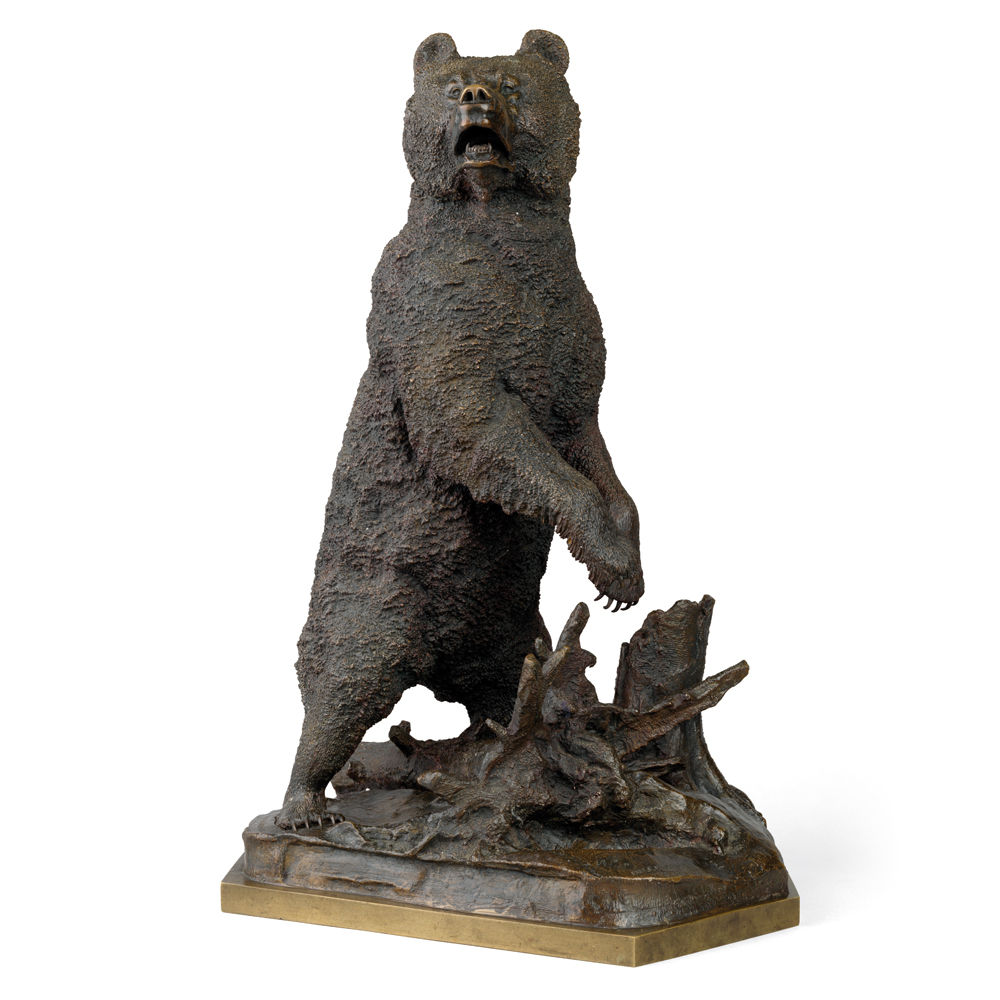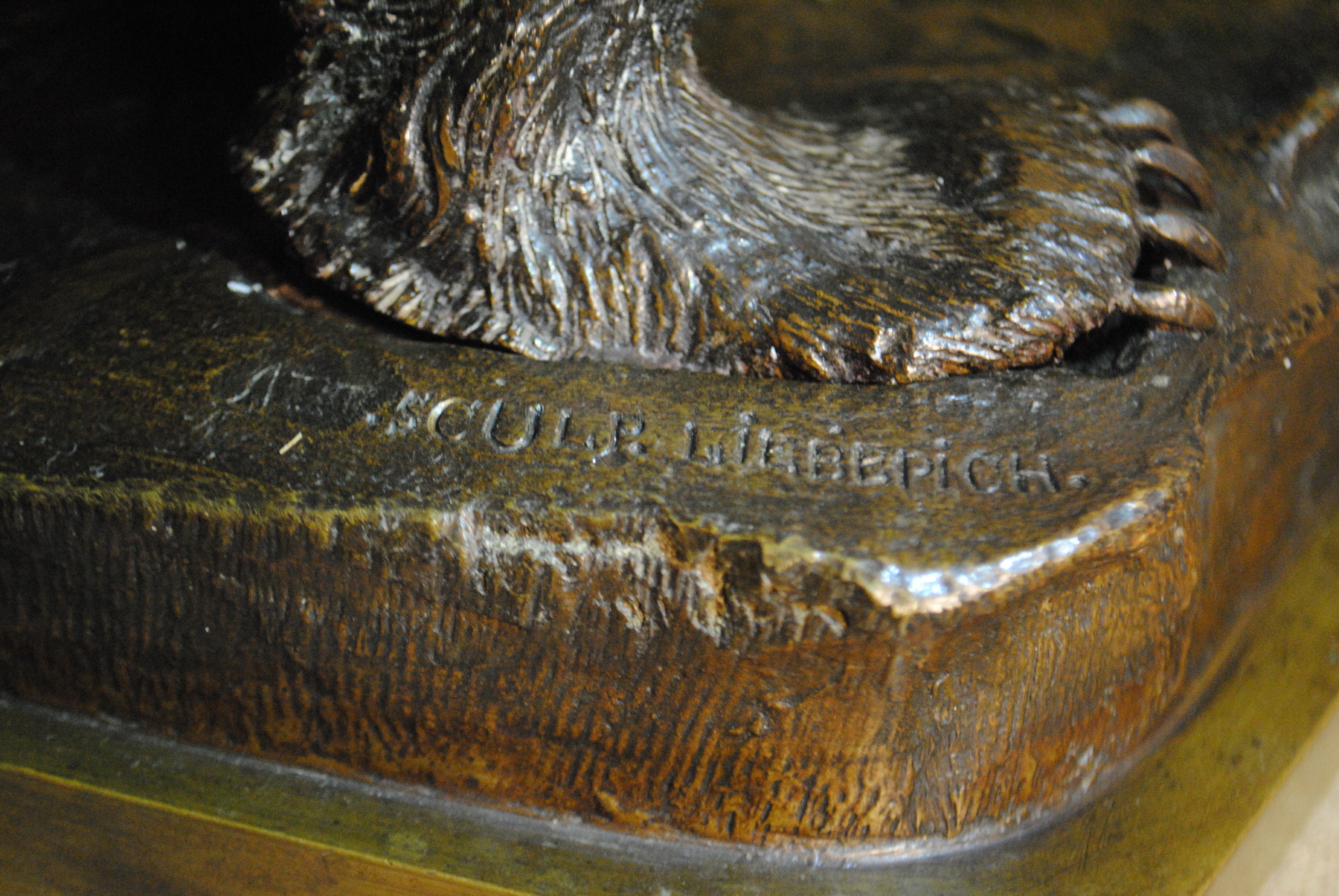26 November 2014 Russian Art Auctions
26 November 2014

* 391. A LARGE LISINSKY BEAR
AFTER A MODEL BY NIKOLAI LIEBERICH, INSCRIBED WITH A SIGNATURE, C.F. WOERFFEL FOUNDRY, ST PETERSBURG
Bronze with dark brown patina, height 56 cm.
8,000–12,000 GBP
Small bronze sculptures destined for interiors became fashionable
in Russia in the second half of the 19th century. Hunting scenes, already a popular subject in paintings and drawings, not least because
of Emperor Alexander II’s passion for hunting, were now embraced
in sculpture. Alexander II was an avid hunter and from an early age, hunting was an essential part of his leisure activities. At the tender age of 10, Alexander Nikolaevich was already accomplished with a rifle. Upon enthronement, the Tsesarevich’s hobby became the Emperor’s fully-fledged hunting seasons, which began during the Coronation festivities in 1856. The hunting lodge in Lisino, built by Nikolai Benois, was a favourite of Emperor Alexander II and where he stayed on some 86 occasions. Such lodges were decorated with various hunting trophies, depictions of the Imperial hunt and the animal statues, for which Nikolai Lieberich is the most famous. In 1865–1866, Lieberich was invited to partake in the Imperial hunt, which provided a valuable source of observation and inspiration for his work. A bear killed by the Emperor during a hunt in Lisino, became the prototype for this highly popular model, executed in 1866. Whilst Lieberich’s works were highly praised at court in the 19th century, they are still sought after today. For example, a specially commissioned bronze-gilt casket with a hunting scene by the sculptor was sold by Sotheby’s in 2011 for almost £140,000. The present cast, with its sharp and precise elaboration of detail, is an example of Lieberich’s animal sculpture at its best.

Notes on symbols:
* Indicates 5% Import Duty Charge applies.
Ω Indicates 20% Import Duty Charge applies.
§ Indicates Artist's Resale Right applies.
† Indicates Standard VAT scheme applies, and the rate of 20% VAT will be charged on both hammer price and premium.